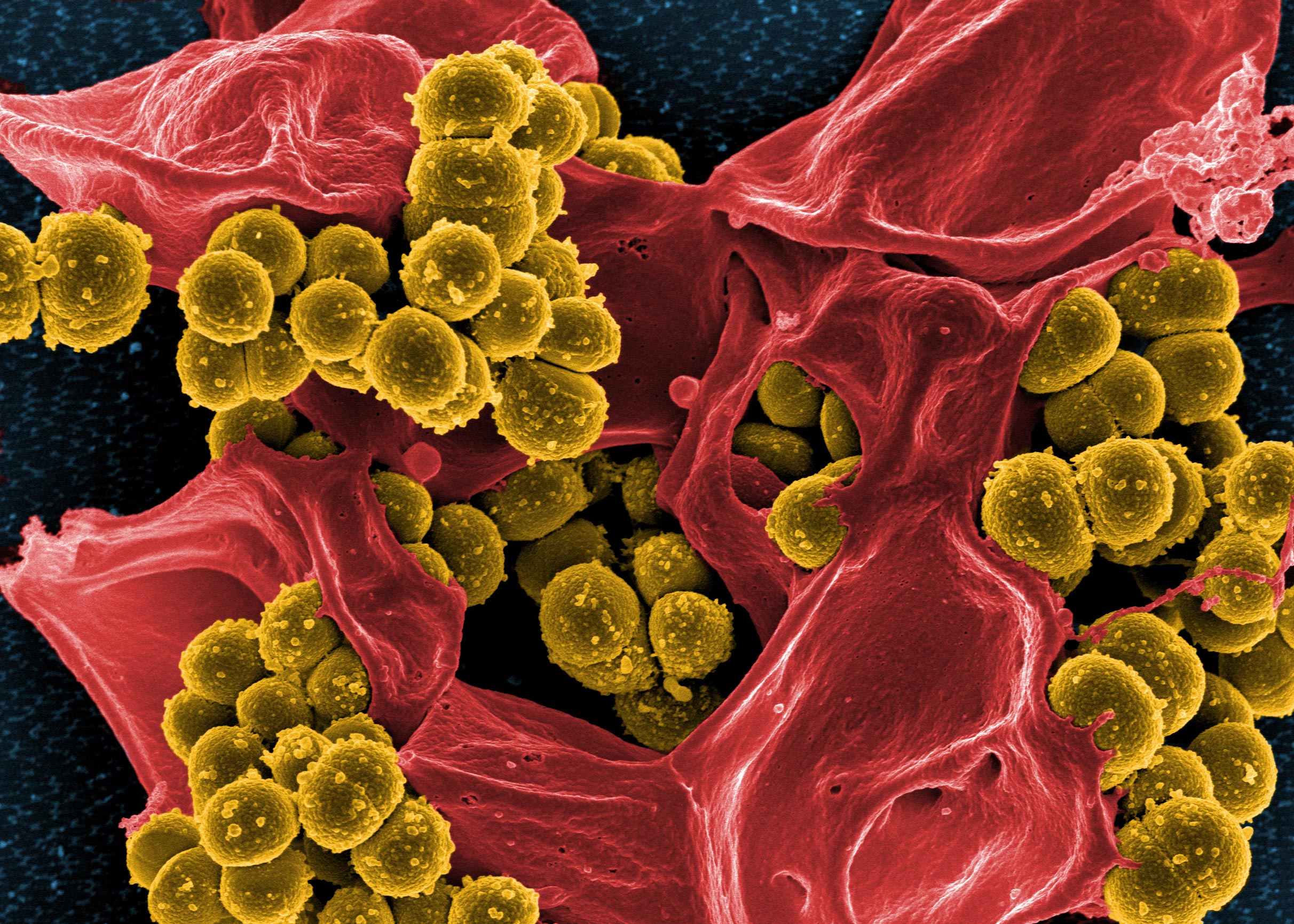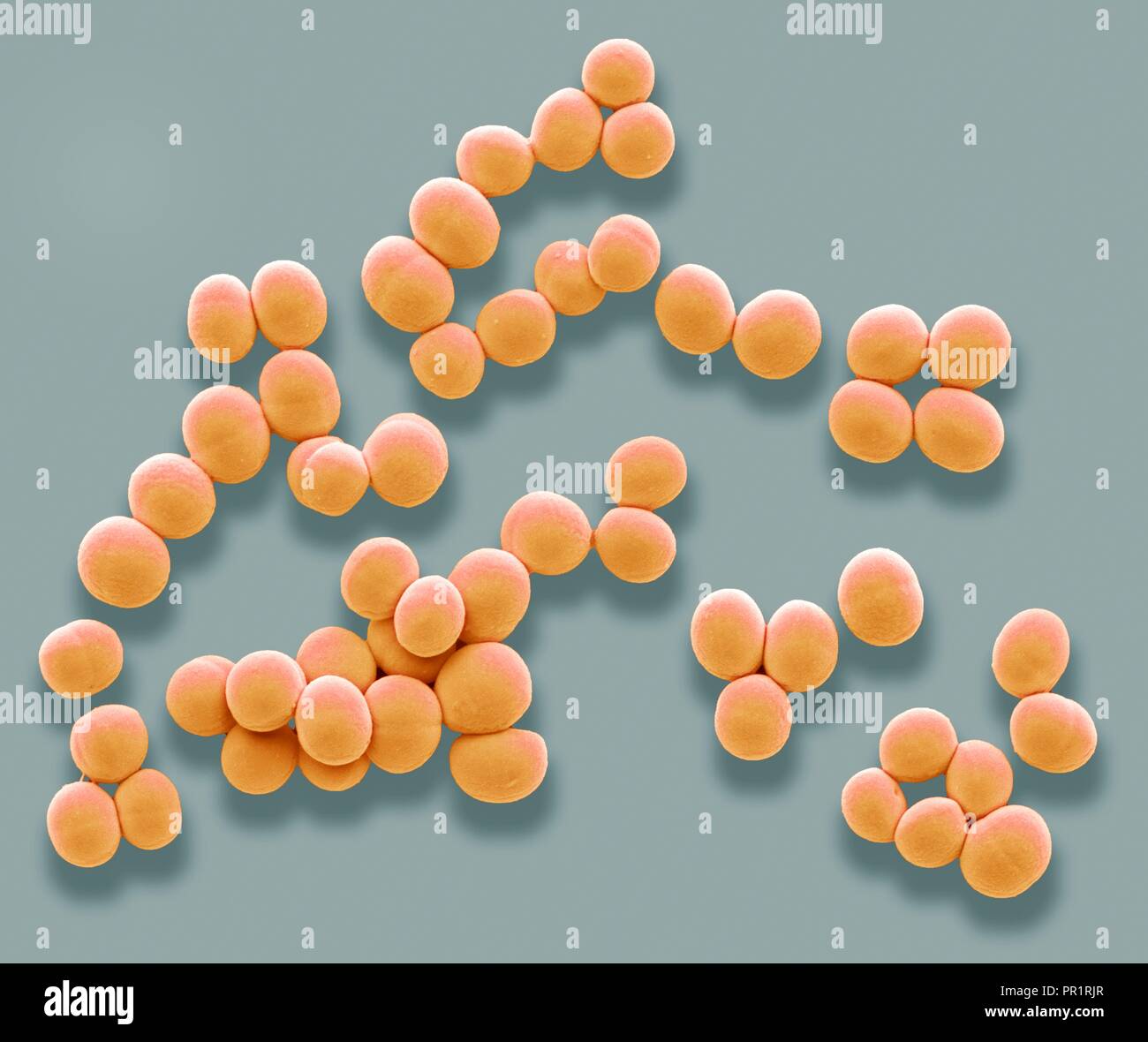The Bacteria Staphylococcus Aureus Is Harmless to Humans
Aureus is a common bacterium that lives on the skin or in the nose. However if it enters the body through a cut in the skin it can cause a range of mild to severe infections which may cause death in some cases.

Staphylococcus From Harmless Skin Bacteria To Deadly Pathogen
Aureus does cause disease it can be a cause for alarm especially in the case of MRSA methicillin-resistant S.

. Yet some strains of this species can cause infections --. Yet some strains of this. Yet out of the 30 or more varieties known to cause disease staphylococcus aureus is the villain most blamed.
These bacteria are often resistant to a particularly effective. The type of diseases caused by the various stages of the bacteria in progression is what distinguishes the various types of disease causing Staphylococcus. It is a frequent cause of infections of the upper respiratory tract including sinusitis and of the skin typically abscesses as well as of food poisoning and medical device contamination.
The bacterium Staphylococcus epidermidisis primarily a harmless microbe found on the skin and in the noses of humans. The bacterium Staphylococcus epidermidisis primarily a harmless microbe found on the skin and in the noses of humans. Digitally colorized scanning electron microscopic image of Staphylococcus aureus bacteria mustard-colored enmeshed within a human white blood cell red-colored.
Staphylococcus aureus is a major bacterial human pathogen that causes a wide variety of clinical manifestations1 Infections are common both in community-acquired as well as hospital-acquired settings and treatment remains challenging to manage due to the emergence of multi-drug resistant strains such as MRSA Methicillin-Resistant Staphylococcus. Staphylococcus aureus bacteria are the leading cause of skin soft tissue and several other types of infections. Aureus is found in the environment and is also found in normal human flora located on the skin and mucous membranes most often the nasal area of most healthy individuals.
Aureus usually acts as a. Staphylococcus bacteria are normally found in the mouth and nose and are harmless and cause no infection. Staph is also a global public threat due to the rapid rise of antibiotic-resistant strains including methicillin-resistant Staphylococcus aureus or MRSA.
The bacterium Staphylococcus epidermidisis primarily a harmless microbe found on the skin and in the noses of humans. Humanity has since learned much more about this bacteria and the role it plays in human disease. In most situations S.
Aureus is the leading cause of skin and soft tissue infections such as abscesses boils furuncles and cellulitis red swollen painful warm skin. The bacterium Staphylococcus epidermidisis primarily a harmless microbe found on the skin and in the noses of humans. Aureus is notorious for being a human pathogen many strains are harmless and can colonize humans without causing symptoms.
While these germs dont always cause harm they can make you sick under the right circumstances. The bacterium Staphylococcus epidermidisis primarily a harmless microbe found on the skin and in the noses of humans. However if it is allowed to enter the bloodstream or internal tissues these bacteria may cause a variety of potentially.
Aureus does not normally cause infection on healthy skin. Genomic island that converts a harmless bacterium into a pathogen. Yet some strains of this species can cause infections - in.
The bacteria is often implicated in minor skin ailments such as acne and other harmless skin rashes. Staphylococcus aureus is a Gram-positive round-shaped bacterium a member of the Bacillota and is a usual member of the microbiota of the body frequently found in the upper respiratory tract and on the skinIt is often positive for catalase and nitrate reduction and is a facultative anaerobe that can grow without the need for oxygen. It is also called golden staph.
Staphylococcus aureus as is presents in small ruminants. Staphylococcus aureus or S. Staphylococcus aureus or staph is a type of bacteria found on human skin in the nose armpit groin and other areas.
Yet some strains of this species can cause infections in catheters artificial joints heart valves and in the bloodstream which are difficult to treat. Reviewed by Emily Henderson BSc. The bacterium Staphylococcus epidermidis is primarily a harmless microbe found on the skin and in the noses of humans.
These bacteria are often resistant to a particularly effective. An international research team led by scientists from Tübingen and the German Center for Infection Research DZIF discovers additional component in staphylococcal cell wall that turns the bacterium potentially deadly. Tick pyemia of lambs.
NIAID The bacterium Staphylococcus epidermidisis primarily a harmless microbe found on the skin and in the noses of humans. A pathogencitiy island is a distinct region of DNA present in the genome of a ___ bacteria but absent in ___ strains of the same species. Yet Staph also commonly colonize our nasal passages and other body sites without harm.
Carried in the nasal passages by up to 30 of humans Staphylococcus aureus is recognized to be a successful opportunistic pathogen. Bacteria reproduce extremely quickly and can pass on genetic material. Yet some strains of this species can cause infections in catheters artificial joints heart valves and in the bloodstream which are difficult to treat.
Staphylococcus Aureus is present in the skin and nasal passageways of many people without causing any harm to their health. Present in pathogenic bacteria not in nonpathogenic.

Staphylococcus Aureus Coloured Scanning Electron Micrograph Sem Of Staphylococcus Aureus Bacteria These Gram Positive Bacteria Cause Skin Infections And Often Grow In These Grape Like Clusters Of Small Spheres Cocci S Aureus Is Extremely

Staphylococcus Aureus Coloured Scanning Electron Micrograph Sem Of Staphylococcus Aureus Bacteria These Gram Positive Bacteria Cause Skin Infections And Often Grow In These Grape Like Clusters Of Small Spheres Cocci S Aureus Is Extremely

No comments for "The Bacteria Staphylococcus Aureus Is Harmless to Humans"
Post a Comment